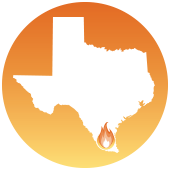The American Tort Reform Association has issued a “Hailstorm Lawsuit Warning” for Hidalgo County, Texas, that may be extended to similarly plaintiff-friendly jurisdictions elsewhere across the Lone Star State where several thousand hail damage claims are now being filed annually, according to Steven Badger of Dallas-based Zelle LLP.
Property Casualty 360 reported in April 2016, when “severe storms and extensive damage come to [Texas], so do the contractors, public adjusters and lawyers who use questionable solicitation and business tactics to insert themselves into the insurance claims settlement process. They hijack the process by seeking claims that are beyond the actual losses and taking legal actions that delay settlements and generate large legal fees. Heavy filings, many groundless, pose a danger to business.”





